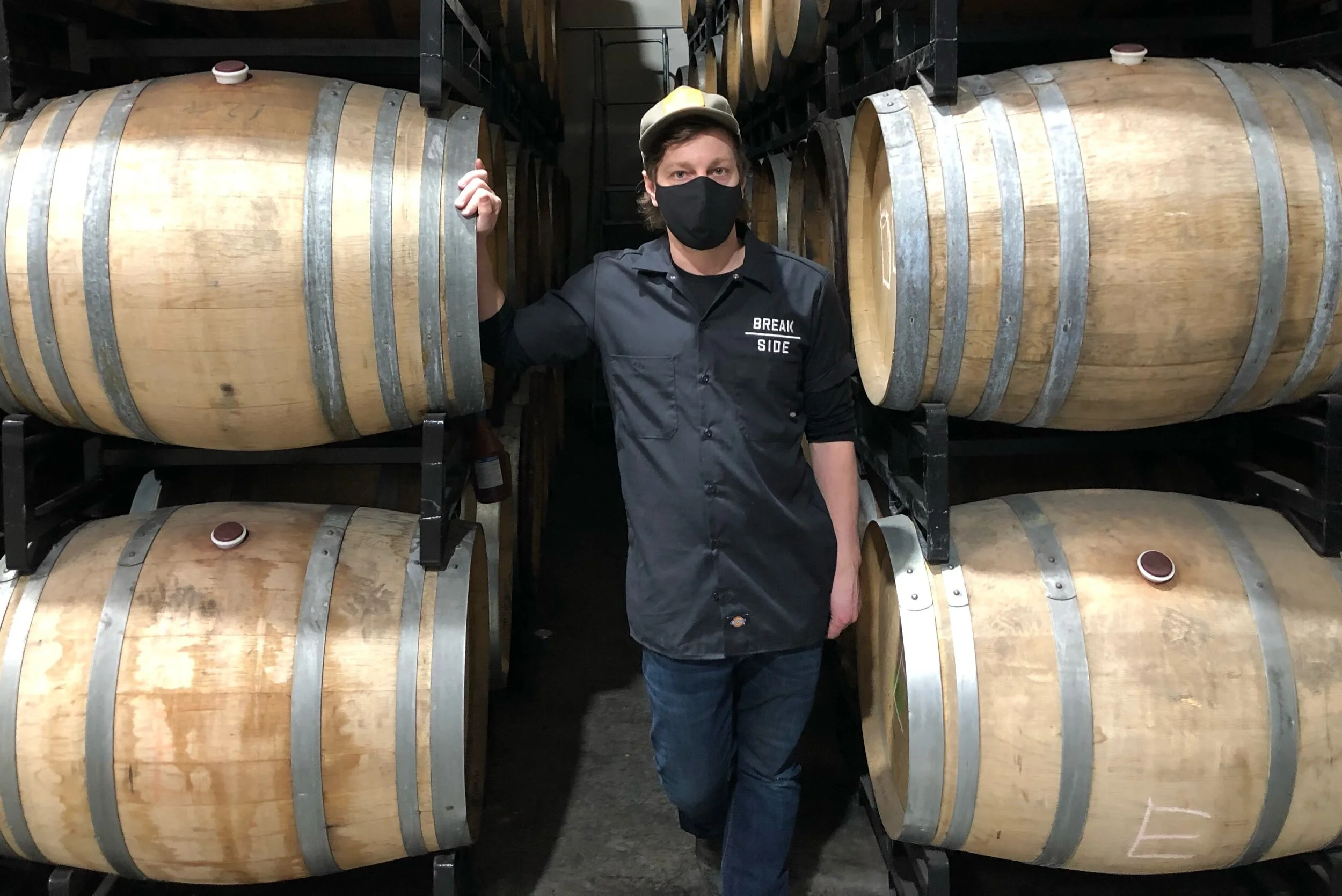
Not all beer is made the same way. Indeed, brewers seem to figure out a different way of making beer in every brewery out there. Here are a few notes on my discoveries. (Caution: may be nerdy and/or technical.)
There’s an old saw that goes like this: while you can hide faults in many beer styles, pilsners are hard because they expose every flaw. In one very narrow sense this may be accurate, but it leaves much to be desired as a general thesis.
In the latest Sightglass article, I explore the remarkable ways barley varieties affect the flavor of beer and how craft malthouses, producing malt in small batches, are transforming American brewing.
With the release of two new stouts, Breakside debuts a new approach to barrel-aging. Borrowing a page from the wild ale playbook, they blend not just different vintages, but different beers to create more integrated, subtle beers than the standard approach of single-batch blends.
Craft breweries are rapidly turning kveik into yet another juice-delivery system, which is fine as far as it goes, but risks slamming the door on far richer, more interesting possibilities. Let’s all be aware of what we’re dismantling before we dismantle it completely.
One brewery accounted for three of the best fresh hop beers I had this year, including the very best example. What’s StormBreaker’s secret?
Dry-hopping is king, especially for fresh-hop beers. Or is it? Bend Brewing’s Zach Beckwith has thoughts.
Things are hard right now—one might even say grim and bleak. But what a tonic it is to poke one’s nose into a pouch of unfamiliar hops and inhale deeply.
Some brewers call their dry-hopped lagers “Italian pilsners,” but there’s more to it than that. Let’s check in with Agostino Arioli, the man who invented the style at Birrificio Italiano.
Craft beer has sparked an amazing wave of hop breeding, both among private companies and government-supported agencies. It started in the US but has now spread around the world. Here is a list of all the new hops you might encounter, from home and abroad.
Lithuania has one of the most interesting and unusual brewing traditions in the world, and should be on your short list for foreign travel. Here’s a primer.
There’s an old saw that goes like this: while you can hide faults in many beer styles, pilsners are hard because they expose every flaw. In one very narrow sense this may be accurate, but it leaves much to be desired as a general thesis.
We casually refer to Brettanomyces as “wild” yeast, despite the fact that most of it is prepared by a technician in a sterile laboratory. But for some brewers, wild means wild.
Modern breweries prefer to boil their wort as briefly as quality allows, owing to efficiencies in time and energy. But it wasn’t always so. In the 19th century, brewers routinely subjected their worts to three, four, or even twelve-hour boils. If you’ve ever wondered what that does to beer, I have the perfect beer for you to try.
It is difficult to brew with spices, and no one does it as well as the Belgians. In this first part of a two-part series, St. Feuillien brewer Alexis Briol offers the philosophy that guides Belgian thinking.
Cask ale is not just the most important symbol of British brewing, it’s also one of the hardest to make beers, the most hand-crafted of beers, and, when it’s made and served properly, the best beers on the planet. Why does no one see this?
Historian and archaeologist Alexander Langlands has a new book called Cræft, the purpose of which is to reclaim the meaning of "craft" as it existed before it became a marketing slogan or an expensive item available at boutiques. How might this apply to beer?
Where can you find a brewer with a “lambic farm” who makes his own invert sugar? In the second post in my pre-Homebrew Con series about homebrewers, I profile Portland’s own Bill Schneller, who champions traditional styles.
Do you ever wish you could go back to a time before a beer style disappeared and have a pint? You can do the next best thing with this amazing video from 1973, the moment Irish porter—and the “high and low” system of pouring it—vanished from the earth.
The idea that an intensely fruity IPA must be cloudy as a weissbier is one of the more dubious in all of beer. No surprise, then, that breweries are pushing the envelop and developing “clear hazy IPAs.” A collaboration between Fair State and Surly is instructive.
Budweiser released a new star-spangled red lager, linking it to both Old Glory and US veterans—a beer that could otherwise be safely ignored. Except that they had to go and drag George Washington into it. Time to set the record straight.
In case you missed it, glittery beer has arrived. You may have seen these strange, wondrous beers on social media and wondered how they're made and what they taste like. I spent a couple hours with two brewers who made recent examples and I have your full report on this truly beguiling new beer style.
In appearance and flavor, sake resembles wine--which is what it's frequently called. It's right there in the first sentence of the Wikipedia entry. "Sake, also referred to as a Japanese rice wine, is made by..." If you stick around for the full paragraph, though, you'll learn what it really is: beer.
"He hung out with them—the guys at Portland Brewing, and the guys at Widmer. I think he thought, ‘These guys seem to be interested in this kind of hop; I’m going to hold on to it.'" The story of how one man saved the second-most-popular hop in America.
As the last post in Homebrew Week, I offer you a complete chapter from The Secrets of Master Brewers. Whether you want to brew this beer or not, it will give you the sense of this book and what you'll find inside. It's great for homebrewers or people just interested in fully understanding beer styles.
The following few paragraphs will take you through the process of making all-grain beer, from mashing through bottling. Just one session of brewing will illuminate more about the process—the chemistry, the variables, and the ingredients—than the most elegant description. When you’re done, you’ll have eight 500 ml swing-top bottles (or ten regular bottles) full of a classic American pale ale.
Most of the homebrewing world is geared to introduce newbies to homebrewing by a method called “extract brewing.” I'm an unusual partisan here: I have absolutely no problem with extract brewing as a method of making beer. With the products available today, you can make fine beer that way. What I'd like to argue, though, is that when you start, you should start with all-grain
The Ferdinand Brewery in Benešov, south of Prague has been malting their own barley for over a hundred years, and the way they prepare the malt and the barleys they use look remarkably like the approach Americans are now trying to revive. Ferdinand is also the source of Weyermann's Floor-Malted Bohemian Pilsner Malt, which is available here in the US (Patrick and I used it on a recent helles).
Modern IPAs have moved away from bitterness in favor of juicy fruit flavors and aromas. But they do still taste bitter. What we're learning is that late-addition hopping and even dry-hopping can add substantial perceived bitterness. The reasons have funny names like hulupones, humulinones, and polyphenols, and we're only just starting to emphasize the role they play in brewing.




























Three years ago, I wrote about a hop making its way through advanced trials, and a couple weeks ago, it made it to the promised land. In today’s post I speak with breeders and researchers about newly-minted Dolcita and what makes her special.